
GRETA VAN FLEET Bassist On METALLICA: ‘They Have A Lot Of Passion For What They Do And They Take It Very Seriously’
In a new interview with Jonathan Clarke of New York’s Q104.3 radio station, GRETA VAN FLEET bassist Sam Kiszka spoke about some of the relationships he and his bandmates have developed with musicians in other bands over the course of the last few years of touring. He said (as transcribed by BLABBERM…
Read more »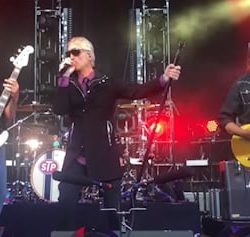
Watch STONE TEMPLE PILOTS Perform In Mountain View As Support Act For SMASHING PUMPKINS
The Jarisse Moore YouTube channel has uploaded video of STONE TEMPLE PILOTS’ August 3 performance at Shoreline Amphitheatre in Mountain View, California as the support act for SMASHING PUMPKINS. Check out the clips below.
In a recent interview with Chasta Michaelis of San Francisco’s 107.7 The…
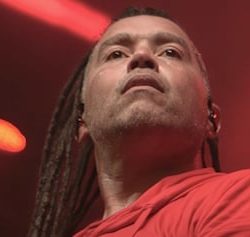
NONPOINT’s ELIAS SORIANO Says ‘The Unforgiven’ Is The Song That Got Him Into METALLICA
In a new interview with RadioactiveMike Z, host of the 96.7 KCAL-FM radio program “Wired In The Empire”, NONPOINT singer Elias Soriano discussed his fandom of METALLICA. Speaking about his first introduction to the heavy metal giants, Elias said (as transcribed by BLABBERMOUTH.NET): “It’s crazy. I k…
Read more »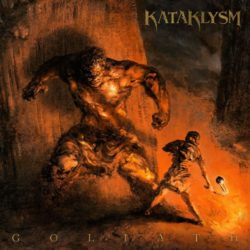
Goliath
Decades pass, empires fall, and metal subgenres come and go, but KATAKLYSM remain resolute. Well over the 30-year mark now, Montreal’s death metal kings have mixed it up on plenty of occasions, but sharp-edged brutality with plenty of groove has been a rewarding staple diet. Seemingly content to tru…
Read more »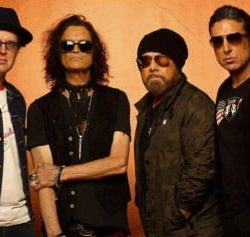
GLENN HUGHES On Musical Direction Of Upcoming BLACK COUNTRY COMMUNION Album: ‘There’s Not Too Many Left Turns’
During an appearance on this past Tuesday’s (August 8) episode of SiriusXM’s “Trunk Nation With Eddie Trunk”, legendary vocalist/bassist Glenn Hughes (DEEP PURPLE, BLACK SABBATH) spoke about the status of BLACK COUNTRY COMMUNION, his supergroup with guitarist Joe Bonamassa, drummer Jason Bonham (LED…
Read more »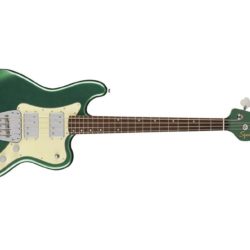
Squier Paranormal Rascal Bass HH Review
Whether you’re a bassist or a guitarist who occasionally fills in as one, short scale basses can be a source of joy, ease, and worlds of expressive potential. Great ones feel like lightning under the fingers. They pack a punch in the fundamentals. And the right ones look and feel a little less like an oversized Viking war ax if you are not a towering Viking. In the case of the newest version of the Rascal, the Paranormal Rascal Bass HH, all of those attributes come together in a bass that’s potent and cuts a unique and beautiful silhouette. And though it may be an amalgam of elements from less iconic but beautiful Fender shapes (not least the Fender version that preceded it nearly a decade ago), the Paranormal Rascal Bass HH is a striking, well-proportioned instrument that looks gorgeous and fits like a glove.Offset OffspringThe first Rascal was an experimental prototype built by Fender Custom Shop master builder Jason Smith for the 2014 NAMM Show. The original version featured a few very substantial design elements. The sweeping bridge was inspired by the tailpiece on the Guild Starfire bass. The headstock matched the contoured take on Fender’s trademark headstock that graced the Coronado hollowbody line. The lipstick pickups, meanwhile, were a clear nod to Danelectro. The new Squier version sticks a little closer to Fender convention, and the shared parts bin. The bridge is a Mustang unit, while the pickups are a big, contemporary variation on the Fender Wide Range bass pickup that 1970s Telecaster basses made famous. Like Smith’s original Rascal, the Squier version is a pretty thing, and the combination of Fender design elements feels more like an organic whole than a product of Frankenstein’s secret bass lab.The bass is well balanced. Neck dive is a non-existent problem, thanks perhaps in part to the biggish Bass VI body, which has ample mass in the lower bout, and the instrument’s 30-inch scale length. The body contours will feel familiar to any player that makes a Jazz Bass home, and the length has the effect of making the Rascal feel substantial where its short scale cousin, the Mustang, can feel almost toylike. It feels very much of a piece, too. So much so that it rattles the ribs with resonance before you ever plug it in.The neck is lovely. It feels more than a little like a Precision Bass neck in spite of the 4-inch difference in scale length. Again, the curvaceous body probably has a part in this sensory illusion. For more obvious reasons, it also evokes the feeling of the more substantial 1960s Mustang necks I’ve met. It’s a great compromise between fat and thin.Robust and RascallyCuriously, the Rascal is the only bass in the Squier or Fender lines that uses Wide Range humbucker bass pickups—either in cunife or more conventional pole-piece formats—which makes you wonder what else the company has in store for the type. (I know a few players that would love to see a Telecaster bass.) And as their impressive, gleaming visual presence suggests, they are a bold-sounding lot. Almost needless to say, they are loud. They’ll out-thump a Precision in terms of sheer volume. And they’ll blow the Rascal’s short-scale stablemate, the Mustang, out of the water when it comes to output and mass, which is a smart move in terms of differentiation among Squier bass models and features.It’s a safe bet that the Rascal’s style and price will make it popular to younger, more punk- and punk-pop-aligned players. But the Rascal would not be out of place in an Albert Hall-era Cream tribute band, and could probably give a Gibson EB-0 a run for its money in terms of punch. The tone differences between the pickups, too, lend real utility to the Rascal’s attitude. Bridge position sounds are in-your-face and bossy, and will induce breakup in 10″ speakers with the right amount of amp push. They can also drive a fuzz or overdrive to fizzy heights. In combined mode, you can use the bridge pickup’s mid-forward attributes to convincingly coax Rickenbacker-like tonalities. And the neck pickup has the personality of a gentle bear. I loved using it for mellower, vintage-style sounds.The VerdictThe Squier Rascal impresses on many fronts. The construction quality is excellent for an instrument in any price class, but it’s particularly impressive for an accessibly priced bass. The lines of the instrument are elegant, pretty, and proportioned in a way that suggests an original design rather than an amalgam of existing style moves. But the best thing about the Rascal is the way it feels. It’s an instrument that will inspire confidence in a pro or a beginner (and it is very cool, indeed, to imagine a player getting to learn the ropes on this fine machine).The pickups won’t be everyone’s lot. They are pretty aggressive and have little of a 1960s-style Precision’s or Mustang’s high-headroom, rub-a-dub contoured edges in the voice. These are rocking, punky-sounding units and, even with volume and tone attenuation or foam dampening at the bridge, they pump out weight and attitude. For most tunes, these pickups will be a great fit—provided the player has a sensitive touch. But it’s hard to not recall the original Rascal’s lipstick units and wonder what a little less output could do for such a great feeling bass. Then again, this Rascal is a Paranormal Series instrument, and it exists to accomplish the unconventional and unexpected. Who knows? Maybe a future iteration of this beautiful bass will be more tuned for vintage ears. In the meantime, even strict low-output adherents will likely find something to love in the way this fantastic value looks and feels.Squier Paranormal Rascal Bass HH – Sherwood Green
Read more »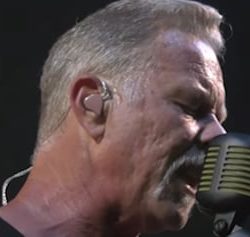
METALLICA Shares Pro-Shot Video Of First-Ever ‘Shadows Follow’ Performance
METALLICA kicked off the North American leg of its “M72” world tour last Friday (August 4) at MetLife Stadium in East Rutherford, New Jersey. The band’s 16-song set kicked off with “Creeping Death” and included three cuts from METALLICA’s latest album, “72 Seasons”: the title track, “If Darkness Had…
Read more »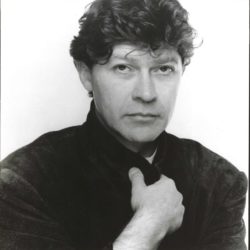
Robbie Robertson—Canadian Father of Americana
Robbie Robertson, Canadian lead guitarist and songwriter for the Band, passed away this past Wednesday at the age of 80 at his Los Angeles home, after battling a long illness. He was surrounded by family at the time of death, and is survived by his wife Janet, children Alexandra, Sebastian, and Delphine, and his five grandchildren.Robertson, who began his musical career at the age of 16, emblazoned the Band with his intuitive, blues-informed lead playing that poignantly resonated with rock’s early history, and through his songwriting and dauntless personality, essentially co-led the group alongside the “omnidextrous” drummer and vocalist Levon Helm. And while the guitarist can’t be credited with having founded the Band, as it in many ways founded itself through the serendipitous merging of its members in the early ’60s Southern rockabilly scene, his role helped to shape the voice of not only Americana music to come, but laid the foundation for the countless roots-rock guitarists that have since followed in his path.Having grown up in Toronto, Canada, with his mother Dolly, whose indigenous roots connected them to the Six Nations Reserve southwest of the city, Robertson’s first exposure to music was on visits to the reserve, where he would regularly hear his relatives perform around sundown. This inspired him to eventually pick up the guitar at the age of 9. By the time Robertson had turned 13 in 1956, artists like Elvis Presley, Frankie Lymon, Fats Domino, and Carl Perkins dominated the charts—and the discovery of rock ’n’ roll in its brilliant, unfettered nascency was revolutionary for him. Despite his youth, the voices of his contemporaries quickly echoed through his own, and at just 16 he sold his ’58 Strat to buy a train ticket to Arkansas to audition for his hero, rockabilly bandleader Ronnie Hawkins.”He provided strength in a folk-storytelling style of writing that drew on an otherworldly, 19th-century kind of life not lived.”Not long after Robertson joined the band, there were some personnel changes, and by the early ’60s, Ronnie Hawkins and the Hawks was made up of Hawkins, Robertson, Helm, bassist Rick Danko, keyboardist Richard Manuel, and multi-instrumentalist Garth Hudson. The bandmates-sans-Hawkins’ fertile artistic connection swiftly led them to outgrow their arrangement with the bandleader, and soon they left, with their first chosen moniker being Levon and the Hawks. Then in 1965, thanks to a mix of merit and alchemy, the group was hired as Bob Dylan’s backing band. (In 1966, Robertson alone was invited to play in the band for Dylan’s classic, Blonde on Blonde.)Now deservedly shrouded in myth, that era encompassed the recording of The Basement Tapes with Dylan at the ugly, pink house located just outside of Woodstock, New York, that manager Albert Grossman acquired for the group in 1967. In early 1968, they recorded their first album independently of Dylan, Music from Big Pink, as the Band.In the 2019 documentary Once Were Brothers: Robbie Robertson and The Band, Robertson speaks on the origins of their name: “In the town, people said, ‘Oh, those guys, they play with Bob. They’re in the band.’ We kept hearing, ‘the band, the band, the band,’ and it felt unpretentious, un-jivey, un-cute, just strictly … the Band.”Music from Big Pink’s track list, spangled with strains of folk, blues, gospel, and old rock ’n’ roll, includes “The Weight,” arguably their most tenacious hit, penned by Robertson, as well as a cover of Dylan’s iconic “I Shall Be Released.” While the album was met with relatively modest acclaim—reaching No. 30 on the Billboard Pop Albums chart in the U.S.—the band knew they were carving out their own place in rock history. Music from Big Pink was followed by the group’s self-titled release, which charted at No. 9, and rounded out their early influence with “Up on Cripple Creek” and “The Night They Drove Old Dixie Down.”As a guitarist, Robertson was lyrical—with an inherent, heightened sense of how to embellish a song’s actual lyrics, a muscular vibrato, and concise phrasing that were so inspiring to Eric Clapton that after hearing the band’s debut, he left Cream to go solo. As a musician in a broader sense, Robertson’s greatest accomplishment may have been completing one of the best bands the late ’60s and ’70s had to offer. He knew how to appear as a frontman while innately supporting his brothers, and provided strength in a folk-storytelling style of writing that drew on an otherworldly, 19th-century kind of life not lived.I first discovered the Band in college, after they’d been shared with me by an older friend, and I have fond memories of “Tears of Rage” ringing out of the car stereo as we drove around upstate New York—not far from Woodstock—where it and other songs served as the perfect backdrop to visits to another friend’s lake house, past cabins in the woods (and one area where a chicken in the road was so reliably there that it acted as a small neighborhood landmark). I didn’t fully grasp their influence then, but the more I’ve listened, the more I can appreciate it—and understand that what they were doing at the time was powerful, and for a moment, unparalleled.Their third release, 1970’s Stage Fright, yielded another memorable single, “Don’t Do It.” As they continued to produce four more studio albums, relationships within the band frayed due to a combination of alcoholism and addiction, and perhaps Robertson’s desire to harbor an increasing amount of songwriting credits, gradually assuming the de facto role as star—likely due to encouragement from outside industry executives.But before the release of 1977’s Islands and their official disbandment, they partnered with director Martin Scorsese, a friend of Robertson’s, to star in the concert film The Last Waltz in 1976. The captured performance, held at the Fillmore in San Francisco on Thanksgiving Day, includes appearances from Muddy Waters, Neil Young, Joni Mitchell, Bob Dylan, Ringo Starr, and Ronnie Wood, a cast of greats whose assembly spoke only to the Band’s stature as roots-rock trailblazers. Considered one of the most important music documentaries, it is enshrined by the Library of Congress for preservation in the National Film Registry.”As a guitarist, Robertson was lyrical—with an inherent, heightened sense of how to embellish a song’s actual lyrics, a muscular vibrato, and concise phrasing.”As a result of his relationship with Scorsese, Robertson went on to compose the soundtracks to The King of Comedy, The Color of Money, and Raging Bull. (Today, he’s scored 14 films, the most recent being Scorsese’s Killer of the Flower Moon, set to be released in October.) Several years after the group’s breakup, Robertson pursued a solo career, releasing six records from 1987 up until 2019’s Sinematic. His autobiography, Testimony, was published in 2016, and recounts in poetic detail his history as a young musician growing up in the industry and the deep meaning of his relationships within the Band. It’s a bit ironic that the Canadian guitarist was a leader of the original Americana movement—and maybe more so that a total of four out of the five band members also hailed from the country. But that may be suggestive of a greater, global collective of music, and its power to transcend perceived boundaries. As Robertson reflects in The Last Waltz, “The road has taken a lot of the great ones…. It’s a goddamn impossible way of life.” He thankfully lived on past that chapter of his life to accomplish even more, and will be remembered for playing an irreplaceable part in the evolution of rock.
Read more »
“We had no idea we were going to do it”: That time Jimmy Page, Jack White and The Edge saluted the Band with a surprise campfire cover of The Weight
The impromptu acoustic jam closes out the 2008 guitar-themed documentary, It Might Get Loud
Read more »
MADBALL’s FREDDY CRICIEN On HOYA ROC’s Departure: ‘We Are Simply Moving In Different Directions’
MADBALL frontman Freddy Cricien says that there is “no bad blood or animosity” between him and the band’s longtime bassist Jorge “Hoya Roc” Guerra who announced his departure from MADBALL earlier this week.
On Wednesday (August 9), Freddy took to the band’s social media to write: “If you haven’t alr…
